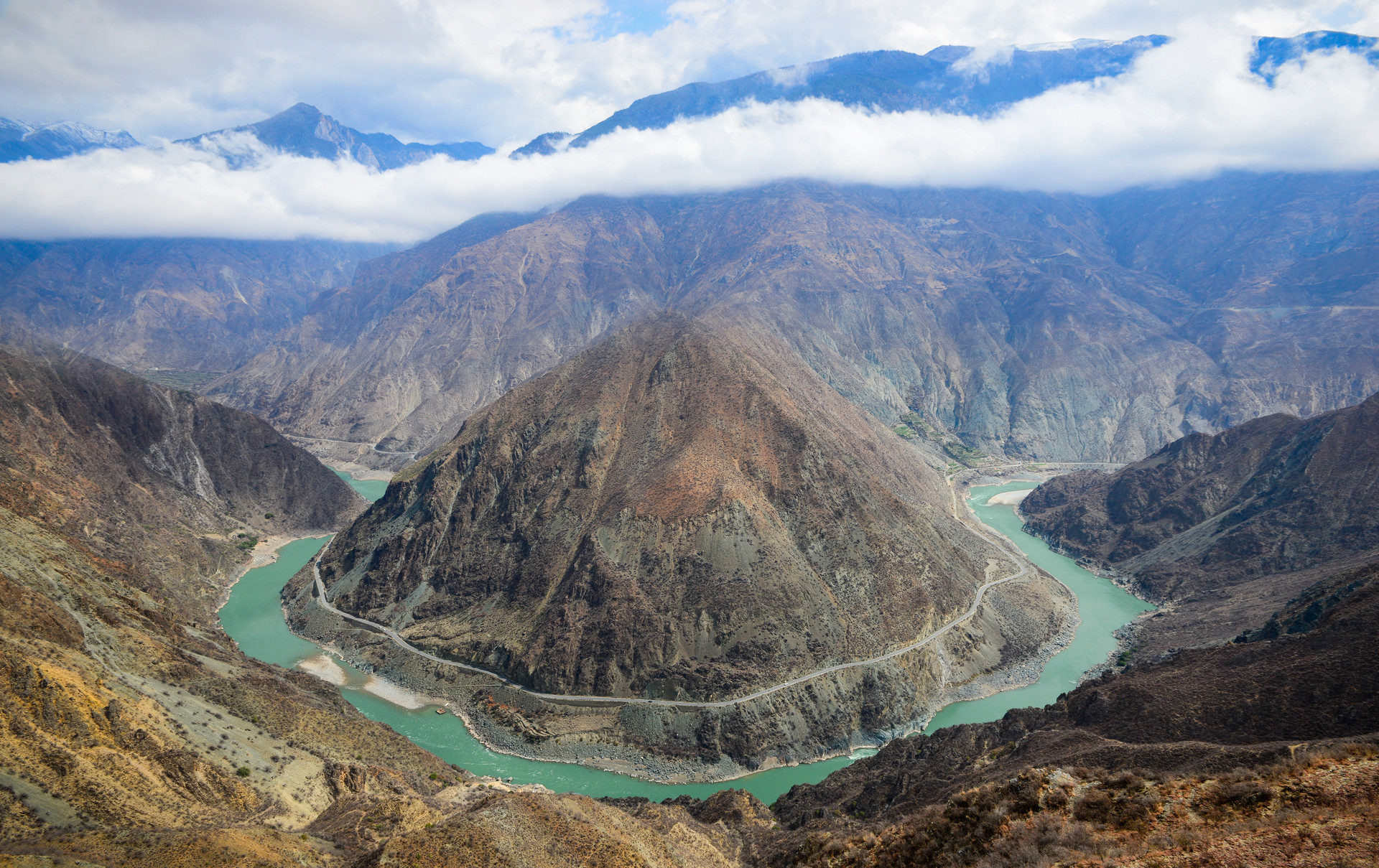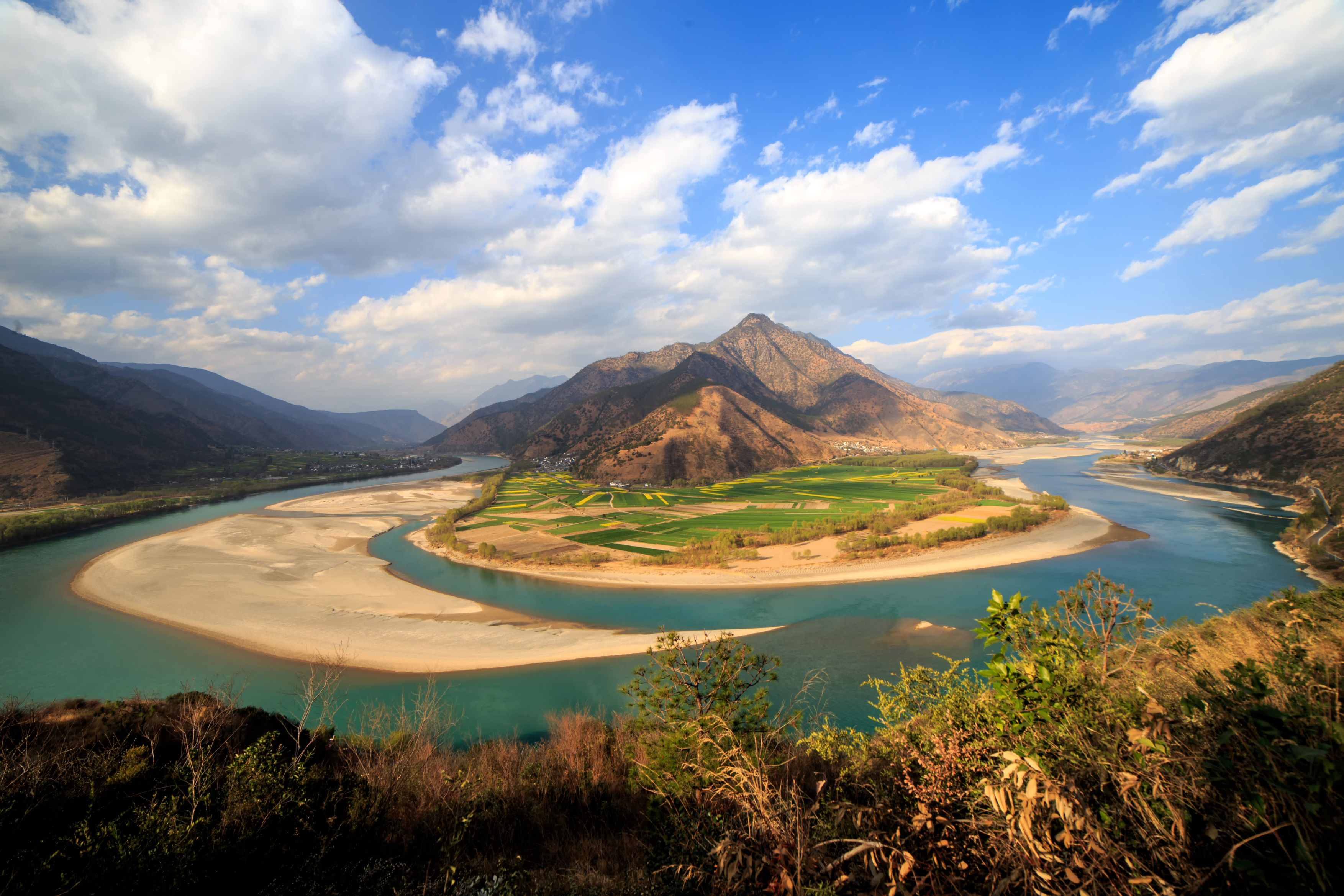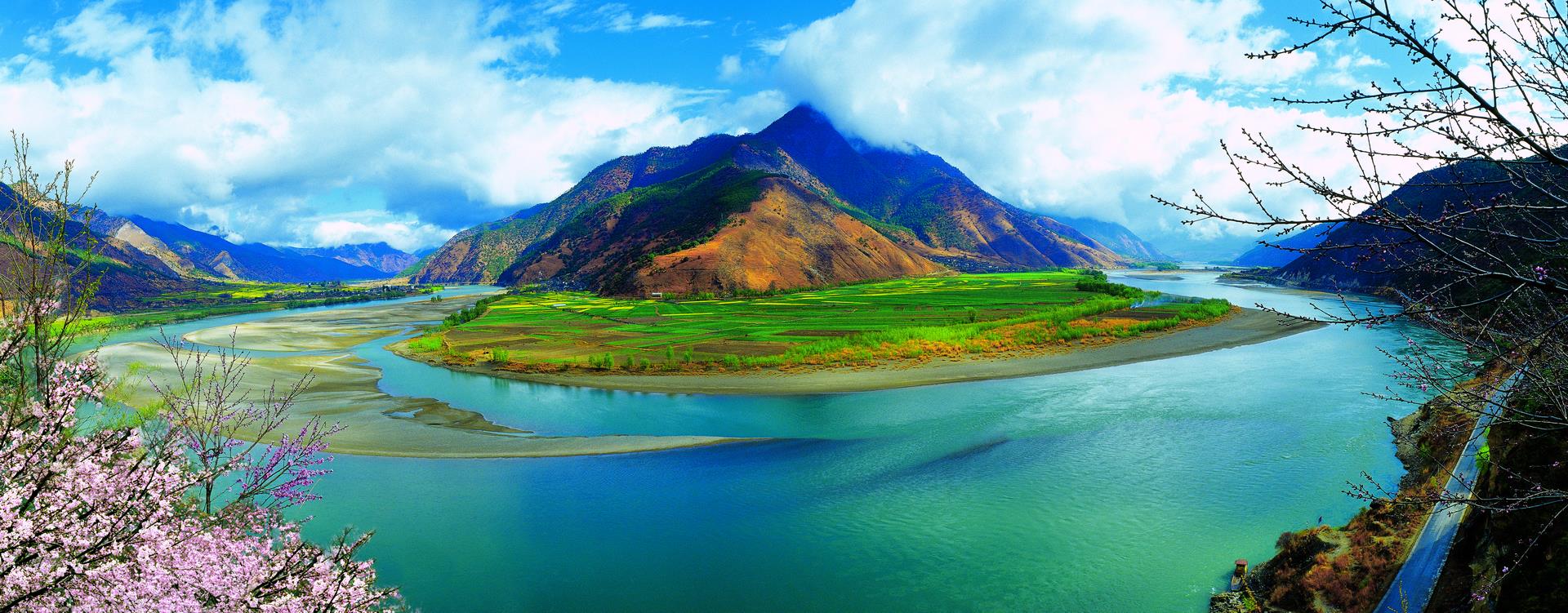


As the third largest river in the world and sometimes called the mother river of China, the Yangtze is one of the great wonders of the world. The Yangtze originates on the Qinghai-Tibet Plateau, and travels southeastward, enters Yunnan Province from the northwest and meets the Lancang River and the Nu River. The three of them flow for a time almost parallel through the high mountains and deep gorges of Hengduan Mountains.
At Shigu Town, also known as Stone Drum Town, the Yangtze is blocked by Hailuo Cliff, forcing the river into the path of least resistance, which causes it to turn sharply to right toward the south. Then when it comes to the end of the cliff it turns back left, toward the north, creating a V-shaped turn of close to 180 degrees as it finds its way around the cliff. Then it heads back toward the northeast. The horseshoe-shaped turn in the river is called The First Bend of the Yangtze River.
At the point of the First Bend, the river is wide and moves at a slow, relaxed pace. The riversides are lush and fertile, with deep green vegetation that grows up the mountainsides, which jut upward sharply not far from the river's edge.
The Laojun Mountain Scenic Area in Lijiang is an important part of the Three Parallel Rivers region. Special scenic attractions near Lijiang include the First Bend of the Yangtze River and Tiger Leaping Gorge.
Between the Shigu Town of Lijiang City and the Shasongbi Village of Shangri-la County, Yunnan Province
Because of its magnificent landscape, the First Bend of the Yangtze River is a popular location for photography. The best time to shoot pictures there is from late February through April when the spring flowers are in blossom and the river is shallow and clear. However, if you want to capture the epic scene of the Yangtze River surging, it’s best to visit in summer during the raining season. Guided tour with private car and driver is recommended.









